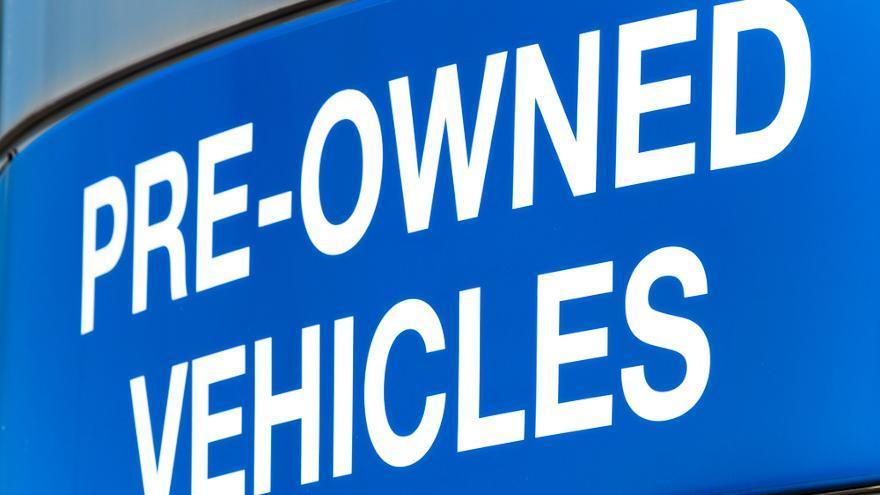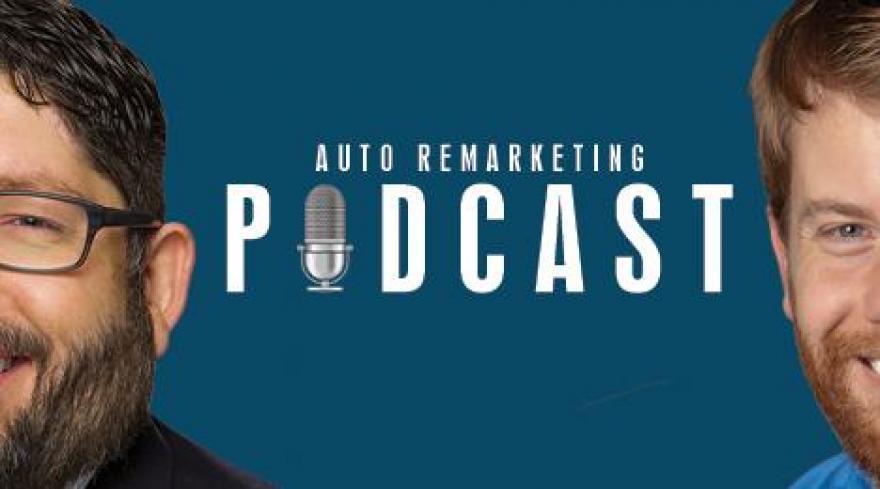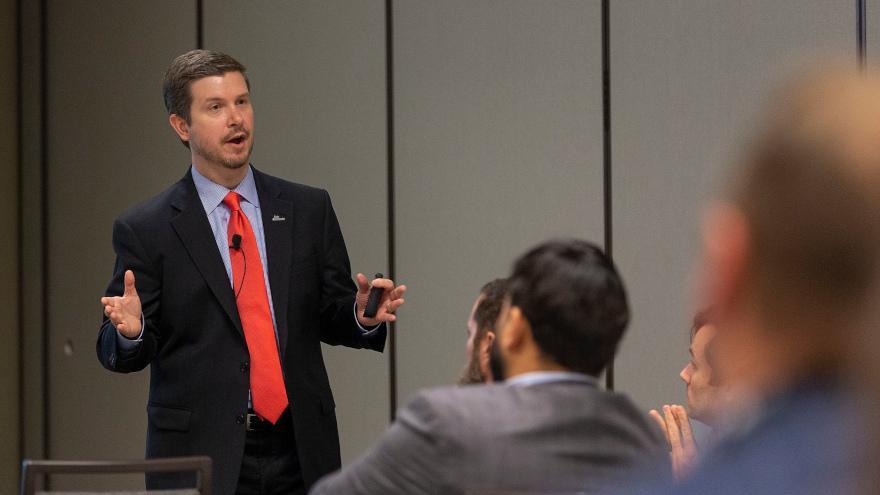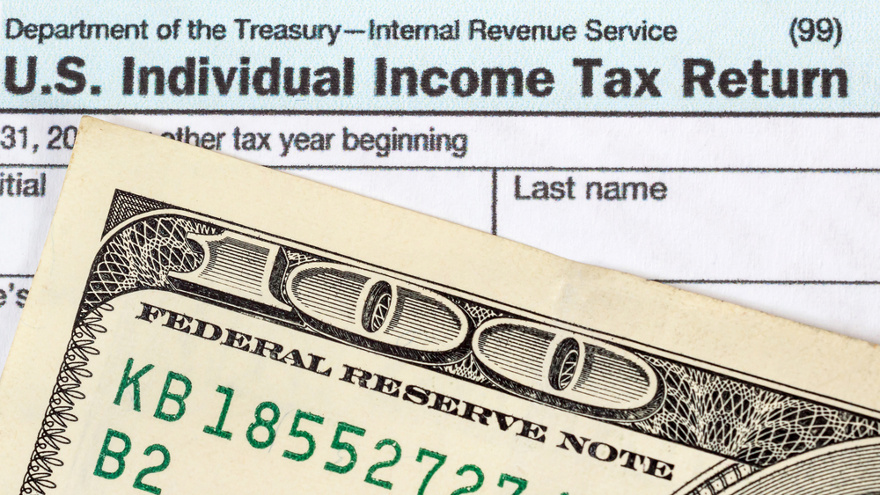In addition to other tailwinds, two of the drivers for rising new-car sales in the third quarter actually came from the used-car market.
Edmunds is predicting 3.85 million new-car sales for Q3, which would beat the second-quarter tally by 30.6%, despite falling 11% year-over year.
In a news release, Edmunds executive director of insights Jessica Caldwell said among the factors lifting new-car sales were higher used-car prices and strong trade-in values, among other market factors.
“Third-quarter sales make at least two things apparent: Most of the doomsday scenarios forecasted at the beginning of the pandemic fortunately did not hold true, and the American consumer stepped up to become one of the many heroes in this chapter of resilience for the automotive industry,” Caldwell said.
“Consistently lower interest rates encouraged new-car buyers — who were less likely to be financially hindered by the economic fallout of the pandemic — to pull the trigger on a purchase,” she said. “Rising used-vehicle prices also likely made the new-car market more appealing for shoppers on the fence between the two. And car owners also got to leverage the extra value that trade-ins are commanding during COVID-19 to offset the cost of their next purchase.”
In fact, Edmunds had previously reported that dealers were paying an average of $14,066 on trade-ins during July, which was up 16.4% from the $12,083 average trade-in value in June.
And used retail prices were quite high in Q3, as Edmunds reported in August that average listing prices for used vehicles jumped more than $700 from June to July, a period in which they normally would see a depreciation-fueled decline.
Specifically, used vehicles had an average listing price of $21,558 in July, which was up $708 from June, Edmunds said.
Separately, in its COVID-19 Market Insights report released Tuesday, Black Book said there was roughly a 4% decline in retail used-car listing prices between early April and the end of June. But the second week of that month started a rise in used prices that has lasted through the third quarter, the Black Book data shows.
“Since early August, used retail prices rebounded to above pre-COVID-19 levels,” Black Book said in the report.
It added: “We expect used retail prices to decline later in the fall as demand will decline in the absence of stimulus payments during a weak economy.”
Used-car sales this month are likely to be down slightly from June, but beat-year ago figures by 9%.
That’s according to the latest forecast from ALG, a subsidiary of TrueCar.
Specifically, ALG is forecasting 3,759,781 pre-owned sales for July, which would be 1% softer than June but a 9% year-over-year-hike.
Not to mention, according to TrueCar’s data, there are many would-be new-car shoppers turning to used.
“As consumers seek more cost-effective options while shopping, used vehicles continue to show strong recovery, up nine percent year-over-year and roughly in line with June. Lower than average inventory levels on new cars as well as economic uncertainly may be causing some consumers to opt for used vehicles,” said Nick Woolard, TrueCar’s director of OEM and affinity partner analytics, in a news release.
“TrueCar marketplace data shows similar trends, with 11 percent of consumers who connected with dealers for pricing on a new vehicle ultimately purchasing a used vehicle,” Woolard said. “This is up 31% versus July 2019.”
If dealers want to compare their November used-sales figures and have a more favorable assessment, the retail forecast from TrueCar’s data and analytics subsidiary, ALG, demonstrated how managers should look back a year ago rather than the previous month.
ALG projected on Tuesday that used-vehicle sales are expected to reach 3,095,166 units in November. Should the industry hit that figure, ALG indicated that retail performance would represent a 9% lift from a year ago but a 10% drop-off from October.
Over to the new-car market, ALG projected total new-vehicle sales will reach 1,399,639 units in November, down 3% from a year ago when adjusted for the same number of selling days. This month’s seasonally adjusted annualized rate (SAAR) for total light vehicle sales is an estimated 16.9 million units.
Excluding fleet sales, ALG expects U.S. retail deliveries of new cars and light trucks to be 1,193,462 units, a decrease of 2.6% from a year ago when adjusted for the same number of selling days.
“Economic fundamentals remain solid with November auto sales continuing to follow a similar trend as previous months in 2019 with a slight year-over-year decline,” said Oliver Strauss, Chief Economist at ALG, a subsidiary of TrueCar.
“Consumers are continuing to purchase vehicles yet at a more cautious rate than in previous years due to ongoing tariff and recession uncertainty,” Strauss continued in a news release.
Meanwhile, the analyst team at Cox Automotive shared its new-vehicle sales forecast for November on Tuesday, too. In this blog post, Cox Automotive projected the SAAR is forecast to finish near 16.9 million, up from last month’s strike-impacted 16.5 million level, but down slightly from the current 2019 year-to-date pace near 17.0 million.
Cox Automotive acknowledged total new-vehicle sales through October are down 1.4% compared to last year, and this negative trend is expected to continue. Sales volume, supported by an extra selling day, is expected to finish 0.4% lower compared to November of last year, according to Cox Automotive, which added that sales, however, will be up nearly 4% from October.
“One key factor will be incentives, which generally rise at the end of the year as OEMs try to push old inventory to make way for new products,” Cox Automotive said. “Black Friday and year-end sales promotions have become an important part of the sell-down strategy and are even more important in a downward moving retail market.
Analysts added another key factor for November’s results will be the recovery of General Motors sales in the wake of the long strike.
According to Cox Automotive senior economist Charlie Chesbrough: “We believe GM fleet activity, and likely some retail, was significantly lower in October by tens of thousands of units as factory closures disrupted deliveries. The question for the market this month is whether these sales were simply delayed, replaced or canceled.”
Cox Automotive went on to note that fleet activity is not only an important question for November sales, but also for the industry outlook going into 2020.
“Fleet sales are up significantly in 2019, as they were in 2018, and these gains have been supporting an otherwise declining new-car market,” analysts said in the blog post. “With significantly higher fleet deliveries over the last two years, further growth in 2020 will be challenging. However, without it, the vehicle market could fall significantly.
“Retail sales — both leasing and purchasing — are down this year, as they were in 2018. Increasing retail sales at this late stage of the current sales cycle also seems unlikely, particularly with vehicle prices and discounts already elevated,” Cox Automotive went on to say.
Retail sales projections from Edmunds, Cox Automotive, J.D. Power and LMC Automotive identified the drivers that are going to impact used-car departments this month as well as perhaps a year or more down the road.
Aided by an extra sales day this July, Edmunds estimated that 3.4 million used vehicles will be sold this month for a seasonally adjusted annual rate (SAAR) of 39.6 million. That’s compared to 3.3 million used sales — or a SAAR of 39.5 million — recorded in June.
Meanwhile, Cox Automotive is expecting fleet sales — both commercial and rental — to be the underpinnings of July’s new-vehicle sales figure, which might rise slightly.
And especially if they’re purchasing a new vehicle, J.D. Power and LMC Automotive are projecting that buyers will continue to pay more as retail prices climb.
Edmunds July forecast
Edmunds is forecasting that 1,380,771 new cars and trucks will be sold in the U.S. in July for an estimated seasonally adjusted annual rate (SAAR) of 16.5 million. This projection reflects a 9.3% decrease in sales from June, but a 0.5% increase from July of last year.
Edmunds acknowledged that July is expected to be the first month in 2019 to show a boost in monthly new-model sales compared to 2018. However, Edmunds experts caution this is not the first sign of a turnaround.
“A lot of people are enjoying vacations and family time in July, so it’s generally not a strong month for auto sales. The fact that automakers could eke out a slight gain is encouraging but not necessarily indicative of a positive trend,” Edmunds senior manager of insights Jeremy Acevedo said.
“The extra selling day makes things look a little better than they really are, and we still believe sales will continue to trend downward through the back half of the year,” Acevedo continued.
Edmunds analysts noted that dealers are starting to get more motivated to move aging inventory off their lots, which is also expected to augment July sales.
“The model-year sell-down is in full swing,” Acevedo said. “We’re seeing old cars lingering on dealer lots a bit longer than they should, which means that shoppers could see more attractive sales events as we head into the end of summer.”
Edmunds estimates that retail SAAR will come in at 14.2 million vehicles in July 2019, with fleet transactions accounting for 14.0% of total sales.
Cox Automotive July analysis
And speaking of fleet sales, that’s a good portion of what the Cox Automotive team is watching.
Cox Automotive is forecasting July U.S. auto sales volume to finish at 1.38 million, rising 0.5% from last year, or about 7,000 units. The seasonally adjusted annual rate (SAAR) is expected to drop to 16.6 million, below June’s 17.3 million level, and down slightly from July 2018’s 16.7 million pace.
Cox Automotive pointed out this July has 25 selling days, one more than last July, which causes the SAAR to fall significantly even though sales volume rises.
“Strong consumer confidence and employment gains are supporting stable demand for light vehicles,” Cox Automotive senior economist Charlie Chesbrough said. “However, affordability issues continue to weigh on the market. The estimated average transaction price for a new light vehicle in the U.S. is $37,285 in the most recent Kelley Blue Book report, and we do not see this number coming down.”
In total, Cox Automotive determined new-vehicle sales in the first half of 2019 dropped 2.2%, or nearly 200,000 units. Analysts insisted that Fleet sales, both commercial and rental, have been the key to supporting the new-vehicle market in the first half. They are likely to remain strong through the year.
Cox Automotive added that retail purchasing and leasing activity was down in the first half of this year, extending the trend from 2018, as consumer activity slows due to affordability concerns.
“Volatility has been as issue in the market in 2019 as the SAAR has shown large swings over various months,” Cox Automotive said. “Some of these swings can be attributed to the harsh winter in much of the country. However, the largest variable continues to be fleet volume.
“Sales of both commercial and rental fleet vehicles have been on the rise due in part to increased depreciation allowances for business-use vehicles,” Cox Automotive added. “The market has seen increased fleet activity and business-use vehicle purchases, and this trend is likely to extend into 2020.”
Projections from J.D. Power and LMC Automotive
And continuing the refrain, mew-vehicle retail sales in July are expected to fall from a year ago, according to a forecast developed jointly by J.D. Power and LMC Automotive. Analysts from those firms said retail sales are projected to reach 1,178,500 units, a 2.0% decrease on a selling day adjusted basis compared with July 2018.
Total sales in July are projected to reach 1,397,400 units, a 1.8% decrease compared with July 2018 (selling day adjusted). The seasonally adjusted annualized rate (SAAR) for total sales is expected to be 16.7 million units, flat versus a year ago.
“July will be another month of modest sales declines — but with high vehicle expenditures — as the average new vehicle sales price exceeds $33,000, up over $1,400 from July 2018,” said Thomas King, senior vice president of the data and analytics division at J.D. Power.
King explained the jump in sales price is being driven by consumers paying more for recently launched SUVs and more attractive interest rates on new vehicles that help keep monthly payments affordable when purchasing more expensive vehicles.
J.D. Power noted the SUV share of new vehicles sold through mid-July has risen to an all-time high level, accounting for nearly 52% of new-vehicle sales. The growth has been led by several recent launches in the midsize SUV segment, which currently sits at its highest share ever (15.8%).
Analysts pointed out the strong demand for SUVs is coming at the expense of less-expensive sedans which account for approximately 28% of industry retail sales for the third consecutive month.
J.D. Power added the average new vehicle sales price is projected to reach $33,182 this month — the highest level ever for the month of July — up more than 4% or $1,415 from last year. The average price for cars is up 5% to $26,853 while trucks/SUVs are up 3% to $35,487.
Analysts went on to mention industry incentive spending is rising and is on pace to exceed $4,000 per unit for the month, the highest level since December 2018. However, the increase in incentive spending on a dollar basis is commensurate with the higher-priced vehicles being purchased by consumers. Manufacturer incentive spending as a percentage of MSRP in July is 10%, the same as last year.
King did note that vehicle shoppers are taking advantage of lower interest rates to finance their vehicles. According to J.D. Power, the average APR for a new-vehicle financing so far in July is 5.7%, down more than 50 basis points from earlier in the year. King highlighted sales with an APR of less than 1% have accounted for 9.2% of new-vehicle financing.
“Despite the continued slow-down in sales, consumers are expected to spend more than $2 billion more on new vehicles than last year,” King said.
“This is a clear reflection that manufacturers are building the types of vehicles that shoppers want. Consumer expenditures in July of $39 billion represents the highest level for the month since 2017,” he went on to say.
Looking forward, both J.D. Power and LMC Automotive reiterated that August is traditionally one of the busiest sales months of the year. This year, analysts noted August sales will be inflated by the inclusion of an extra weekend compared to last year, as well as the fact that sales over Labor Day will be included in the manufacturers’ August results.
As manufacturers look to take advantage of heavy shopping during the month, J.D. Power and LMC Automotive said a key question is an extent to which they can maintain incentive discipline. The temptation to increase discounts, particularly to clear out inventories of 2019 model-year vehicles will be significant, according to analysts.
“There are signals that auto sales in the second half of 2019 are poised to outperform expectations,” said Jeff Schuster, president of Americas operations and global vehicle forecasts at LMC Automotive. “While trade risk remains a threat, transaction prices continue to rise and economic growth is moderating, sales in the second half of the year could outperform expectations consistent with strength in the previous five years.
“This year sees higher fleet volume year-to-date, falling interest rates and escalating incentives. It won’t change the fact that the market will be down from 2018, but if consumers respond to the favorable environment, a run-up at the close of 2019 is possible,” Schuster went on to say.
Expect that truck bringing parts to your dealership service department to still have a driver behind the wheel at least for the foreseeable future.
A new report from Navigant Research released on Wednesday analyzed the state of the automated medium- and heavy-duty commercial vehicle market, providing global market forecasts, segmented by vehicle class and region, through 2030.
Report authors noted that advanced driver assistance systems (ADAS) and automated driving systems (ADS) for commercial vehicles have been gaining market attention for several years. While growth of ADS is expected to be rapid once the technology is fully developed, Navigant Research determined that volumes will remain low over the next decade.
Navigant Research estimated annual sales of highly automated commercial vehicles are not expected to exceed 1% until 2028.
“Automated technologies can provide many benefits for the commercial vehicle sector, but challenges such as advancing technological abilities, overreliance on partially automated systems, regulatory environments, and public perception will all need to be managed moving forward,” Navigant Research analyst William Drier said.
According to the report, once challenges are overcome, the most substantial benefit from ADAS is the potential safety increases it can provide through features such as automatic emergency braking, lane departure warning and lane keeping assist.
Navigant Research projected that there is also the potential for fuel efficiency gains through platooning in the heavy-duty long-haul truck sector.
Additionally, the report mentioned higher levels of automation could eventually reduce labor costs by replacing some of the labor, while providing downward price pressure on the demand for labor in the rest of the market.
The report titled, Automated Commercial Vehicles, analyzed the state of the automated medium and heavy-duty commercial vehicle market. The study was designed to provide an overview of the new and established key players operating in the market.
The report also explored the potential opportunities for growth and development, as well as the challenges to market expansion of ADAS and ADS.
Navigant Research shared an executive summary as well as the opportunity purchase the entire research report at this website.
To give dealers and finance companies insight going into close the first quarter, Nick connected with a pair of experts from J.D. Power for this Auto Remarketing Podcast episode.
Thomas King, the senior vice president of J.D. Power’s data and analytics division, dissected the used-vehicle market, while Doug Betts, senior vice president and general manager of global automotive at J.D. Power, offered insights on the broader future of the automotive industry.
The full discussion can be found below.
Download and subscribe to the Auto Remarketing Podcast on iTunes or on Google Play.
You can also listen to the latest episode in the window below.
Catch the latest episodes on the Auto Remarketing Podcast homepage and on our Soundcloud page.
Those used vehicles on your front line and highlighted on your store website — especially certified pre-owned models — are going to look even more appealing if a new report from Edmunds is any indication.
Edmunds projected on Wednesday that used-vehicle sales in 2019 are poised to hit the highest level since the recession. In 2018, analysts said 40.2 million used vehicles were sold in the U.S. In 2019, Edmunds is predicting used-vehicle sales could approach 41 million.
Edmunds experts explained that rising vehicle prices and high interest rates are pushing buyers out of the new market, and a record number of lease returns this year will give shoppers more options than ever in the used market.
“Typically, sales of new and used vehicles follow the same pattern — if sales of new vehicles rise or fall, so do sales of used vehicles, and vice versa,” Edmunds senior manager of industry analysis Ivan Drury said in a news release.
“But now we’re seeing new-vehicle sales fall while used rise, indicating the market has reached a flash point,” Drury continued. “New cars are getting so expensive that they’re out of reach for many car shoppers, but there are so many more affordable used vehicles coming off lease that the market is naturally shifting in that direction.”
Edmunds data showed that in 2013, the price gap between new and 3-year-old used vehicles was 56 percent, amounting to more than $11,000 in savings on average. In 2018, that number grew to 62 percent, totaling nearly $14,000 in savings on average.
Edmunds data also revealed that interest rates on new-vehicle financing jumped by 17 percent in 2018, whereas rates for used vehicles have risen at a slower clip, with interest rates increasing by 9 percent in the same period.
Edmunds experts added that these market conditions have never been more favorable for certified pre-owned vehicles, but there’s an opportunity for automakers to better educate vehicle shoppers on the benefits of these programs.
According to Google Trends data, relative search interest for CPO vehicles has steadily increased over the last five years, but the top pages viewed on Edmunds for shoppers of CPO vehicles are “What Are Certified Pre-Owned Vehicles?” and “Certified Pre-Owned Cars Vs. Used Cars With Extended Warranties.”
“Many shoppers are unaware of the benefits of CPO vehicle programs, but given the tough financial conditions in the new market, it’s never been a better time to look into them,” Drury said.
“Between more affordable prices, the assurance of an automaker warranty, and lower interest rates, CPO vehicles give car shoppers a way to enjoy many of the benefits of a new car and minimize many of the risks of buying a used car,” he went on to say.
The Price Gap Between 3-Year-Old Used Vehicle Versus New Model
| Segment |
2013 |
2018 |
Additional
Percentage Savings |
| Subcompact Car |
$5,750 |
$7,519 |
31% |
| Compact Car |
$7,135 |
$7,891 |
11% |
| Midsize Car |
$9,679 |
$10,979 |
13% |
| Large Car |
$14,771 |
$15,623 |
6% |
| Sports Car |
$9,656 |
$15,877 |
64% |
| Subcompact SUV |
$11,423 |
$9,302 |
-19% |
| Compact SUV |
$7,997 |
$9,760 |
22% |
| Midsize SUV |
$13,753 |
$13,924 |
1% |
| Large SUV |
$21,965 |
$24,024 |
9% |
| Midsize Truck |
$7,594 |
$9,341 |
23% |
| Large Truck |
$14,550 |
$15,765 |
8% |
| Minivan |
$11,765 |
$12,154 |
3% |
| Luxury Subcompact Car |
$8,568 |
$13,606 |
59% |
| Luxury Compact Car |
$15,079 |
$19,509 |
29% |
| Luxury Midsize Car |
$19,755 |
$25,991 |
32% |
| Luxury Large Car |
$35,547 |
$45,486 |
28% |
| Luxury Sports Car |
$33,392 |
$37,374 |
12% |
| Luxury Subcompact SUV |
N/A |
$15,252 |
N/A |
| Luxury Compact SUV |
$16,141 |
$18,967 |
18% |
| Luxury Midsize SUV |
$19,711 |
$22,318 |
13% |
| Luxury Large SUV |
$36,049 |
$41,536 |
15% |
| Industry |
$11,398 |
$13,705 |
20% |
Source: Edmunds
It was a bit of a rocky road to begin 2019, but certified pre-owned vehicle sales are likely to reach another record year, according to Cox Automotive.
Its analysts are calling for 2.75 million CPO sales this year, which would be up from 2.70 million in 2018.
That would be the ninth straight record years for the CPO market, despite sales falling 1.67 percent year-over-year in January and coming in flat (down 0.28 percent) in February.
“CPO sales are being driven by favorable supply as well as strong used retail demand,” Cox Automotive analysts wrote in an analysis released Wednesday. “As new-vehicle transaction prices keep going up, affordability pushes more consumers into the used-vehicle market, particularly these gently-used, high-content vehicles.”
Overall, there was an estimated 2-percent lift in the used-car retail market last month, Cox Automotive said a report accompanying the latest Manheim Used Vehicle Value Index.
The seasonally adjusted annualized rate for used-car sales in February showed some improvement as well, coming in at 39.4 million, Cox estimates.
In January, it was 38.8 million; and in February 2018, it was 38.6 million.
Overall dealer sentiment is up, albeit still in “negative territory.” The Cox Automotive Dealer Sentiment Index climbed from 44 (out of 100) in the fourth quarter to 48 in the first quarter of 2019. There was also improvement in the expectations dealer have for the next quarter.
“We’ve seen a turnaround in dealer sentiment and the outlook for the future this quarter compared to the fourth quarter,” Cox Automotive Chief Economist Jonathan Smoke. “However, gone is the euphoria we saw this time last year as views of new- and used-vehicle sales are lower.”
Among the other drivers of dealer tentativeness, one was a slower tax refund season. But dealers in the used-car space should take heart.
In a separate “Smoke on Cars” commentary, the Cox chief economist wrote that the signs are bright for the used-car market.
“While tax refunds are down in total and a large number of people are clearly surprised and even in a situation of owing when they are used to getting a refund, most people are still getting refunds. The average refund may end down compared to last year, but it will still be substantial,
Smoke wrote.
“The best news for the used-car market is that a sizable number of households getting a refund do plan to use that money to buy or finance a vehicle,” he said. “And many of the households most likely to buy used appear to be those more likely to be positively surprised by receiving a bigger refund.
“The more severe impact on those who previously itemized will disproportionately fall on high tax states and higher income households, so there will be differences in the used-car market regionally,” Smoke said.
Going back to the Dealer Sentiment index, the overall score when dealers were asked how they would describe the current used-vehicle sales environment was 53, up from 51 in the fourth quarter.
For independents, it was 48, but that’s up from 46 in Q4. For franchised dealers it was 66, compared with 68 in Q4.
Asked about current used-vehicle inventory levels, the score for dealers overall climbed from 48 to 54. For franchised dealers, it rose from 54 to 62.
For independents, it climbed from 46 to 52.
Auto dealers looking forward to increased traffic at tax refund season might be in for an unpleasant surprise this year.
Last year’s tax reform legislation is part of the reason that early refund amounts are down from last year, according to a recent Autolist study. Also, younger buyers are less knowledgeable about the legislation, and those younger buyers have been the ones who were most likely to spend their refunds on a vehicle, according to Autolist.
In late January and early February, Autolist surveyed 1,838 current car shoppers to see how they planned on spending any of their tax refund on a new or used vehicle this year, if at all.
Fifty-nine percent of respondents between the ages of 18 and 28 said they planned to use all or some of their refund to get a new or used vehicle this year. That compares to just 26 percent of shoppers ages 66 and older who said they planned to do the same.
Across all age groups, 43 percent of respondents plan to spend all or some of their tax refund on a vehicle this year.
One reason for the different results between age groups is that younger buyers rely more on their annual tax refund to supplement their incomes. Older buyers with higher incomes don’t need their refunds as much for vehicles and other large purchases.
Another factor: Optimism. Thirty-nine percent of shoppers between 18 and 28 years old expected an increase in their tax refund. Just 14 percent of consumers over 65, however, expected their tax refund to increase.
Thirty-nine percent of consumers across all age groups expected their refund to increase this year.
If early returns are any indication, the younger crowd might be in for a bummer when they learn the amount of their tax refunds. During the first week of returns this year, according to Autolist reporting IRS data, the average tax refund was down 8.4 percent, and the number of people receiving refunds at all dropped by a quarter.
Autolist notes that much of that drop is because of the tax reform legislation.
Many Americans received a tax cut because of the legislation. But tax filers, especially if they did not change the amount they wanted withheld from their paychecks, could see a noticeable change in the size of their refunds.
Older consumers were more aware of that than younger ones, according to Autolist.
That could cause dealers to see a drop in expected business. Sixty-four percent of the over-65 group said they knew the legislation could change the size of their refund. Just 45 percent of 18-to-28-year-old group said they were aware of that.
Now, those younger buyers who had been counting on a larger refund might have to delay their trip to the dealership.
But Autolist believes that might not be such a negative development. Autolist says “experts agree” that buyers might not get the best deal on a new or used car during tax season.
The auto industry attributes strong months after President’s Day in February and before Memorial Day in May to tax refund checks, according to Autolist. Because of that demand, the company says, fewer dealers offer sales or deals, so consumers should wait until the end of May to do car shopping, Autolist says.
Younger shoppers aren’t aware of that. Fifty-eight percent of consumers 18 to 28 years old believed tax season was a good time to get a new or used vehicle, according to the Autolist survey. Thirty-two percent of respondents over 65 said it was a good time to buy a vehicle.
An average of forty-eight percent of the 1,838 respondents overall thought tax season was a good time to buy a car.
A majority of all respondents did not agree with the idea of using tax refunds to purchase a new or used vehicle. Seventy-two percent had never done that. One quarter of the respondents said they had used all or some of a prior year’s refund to get a vehicle, while 3 percent were unsure.
In another ominous sign for auto sales, the Federal Reserve Bank of New York’s Center for Microeconomic Data released its January 2019 Survey of Consumer Expectations, which showed households were less optimistic about the economy and future changes in their financial situation. Survey respondents were less optimistic about future credit availability, and many expect to be financially worse off a year from now.
It was the eighth straight year of record certified pre-owned car sales, amid an overall used-car retail market that is still seeing some strength.
And while there are signs the used-car market may have peaked from a sales volume perspective, the feeling around last week’s NADA Show 2019 — and in recent forecasts and analyses — is that there’s a still a lot of opportunity in this segment.
Patrick Manzi, senior economist at the National Automobile Dealers Association, said during a press conference at the convention that franchised dealers had increased year-to-date used-car sales 5.1 percent through November.
“And we do expect that trend is going to continue,” Manzi said.
Franchised dealers sold 12.2 million used cars for full-year 2018, according to a presentation from Thomas King, the senior vice president of J.D. Power’s data and analytics division, during the J.D. Auto Summit held just before NADA.
That was up from 11.8 million in 2017 and continues what has been a simultaneous rise in franchised used-car sales and off-lease supply, according to J.D. Power data.
In 2014, there were 10.4 million used-car sales at franchised dealers amid off-lease volumes of 2.2 million units, the data indicates. Both numbers have steadily risen to 12.2 million used sales at franchised stores in 2018 and off-lease supply of 3.7 million.
King said to expect 4.1 million in off-lease units this year.
He said he is “encouraged by the fact while there are challenges to used-vehicle profitability, the overall performance on used is better than we see on new.”
In a presentation later that day, Jonathan Banks — who is vice president and vehicle valuations and analytics at J.D. Power — echoed much of King’s sentiment on used opportunities.
“When you think about (King’s) positive outlook for new-vehicle sales — some risk, but overall positive — we believe the used-vehicle segment has the same (outlook), maybe even a little more positive, especially from a dealer perspective,” Banks said. “From an opportunity perspective, we think the used market is really poised to offer huge opportunities that haven’t really been around and really are based on a fundamentally healthy market.”
Banks also noted that used-car gross margins faring better than new-car gross margins these days, and that the pre-owned market is attracting Generation Y and Generation Z buyers.
New-car sales and used-car sales are heading in different directions, he said.
“We’re in a new era, to me, of utilizing used-vehicle sales to offset that decline in new-vehicle sales, creating affordability, but in a whole different way. It’s affordability to a mindset,” Banks said. “Gen Z’s are looking to affordability, but it’s a mindset. It’s not like the affordability we went after post-recession … where you’re coming out of the economy collapsing.”
Along those lines, while NADA is seeing used-car payments climb, there is still a strong gap between those on the new-car side.
“I think a lot of consumers, when they walk into the dealership, they may have gone in expecting to get a new vehicle, but then they look over at the used lot and they see pretty much the same car, 2 or 3 years old, low miles and a big $150 gap,” Manzi said, referring to the gap in monthly payments.
“That’s going to be enough to pull a bunch of consumers over to the used market, even those with really good credit will be tempted by these used vehicles,” he said.
With what he described as a strong labor market, Manzi said younger generations are now going out to buy cars and most of those are going to turn to used.
Expectations for this year
It’s expected that January will see overall used retail sales — including those involving franchised dealers, independent dealers and private parties — reach 3.1 million units, according to Edmunds.
That would beat December’s total of 2.7 million, but represent a slower seasonally adjusted annualized rate of 39.2 million (against the 39.7 million SAAR last month), Edmunds said.
In its NADA Show press conference, Cox Automotive predicted full-year overall used-car retail sales of 39.5 million units for 2019, which would be consistent with last year’s figures.
“The used-vehicle market came in at the best year for the expansion at over 39.5 million units, thanks to favorable supply and demand, helping that part of the business grow,” Zohaib Rahim, Cox Automotive’s manager of economic and industry insights, said of 2018.
“However, looking forward, we are expecting a market that is post-peak,” Rahim said.
Cox Automotive is projecting 2020 used sales of 39.2 million, following this year’s 39.5 million.
Certified pre-owned still hot
One area of the used-car market that continues to bear fruit is CPO. Citing data from Autodata, KAR Auction Services chief economist Tom Kontos said certified sales in December climbed 8.4 percent from November and 1.3 percent from December 2017.
That led to a 2.1-percent hike in full-year CPO sales, Kontos said.
“On the demand side, CPO sales were strong in December and helped set another annual sales record,” Kontos said in the latest edition of his Kontos Kommentary.
Likewise, in this Kelley Blue Book post last week, KBB’s Matt DeLorenzo pointed out Cox Automotive economist estimates that there were 2.7 million certified sales last year, the eight straight all-time high.











